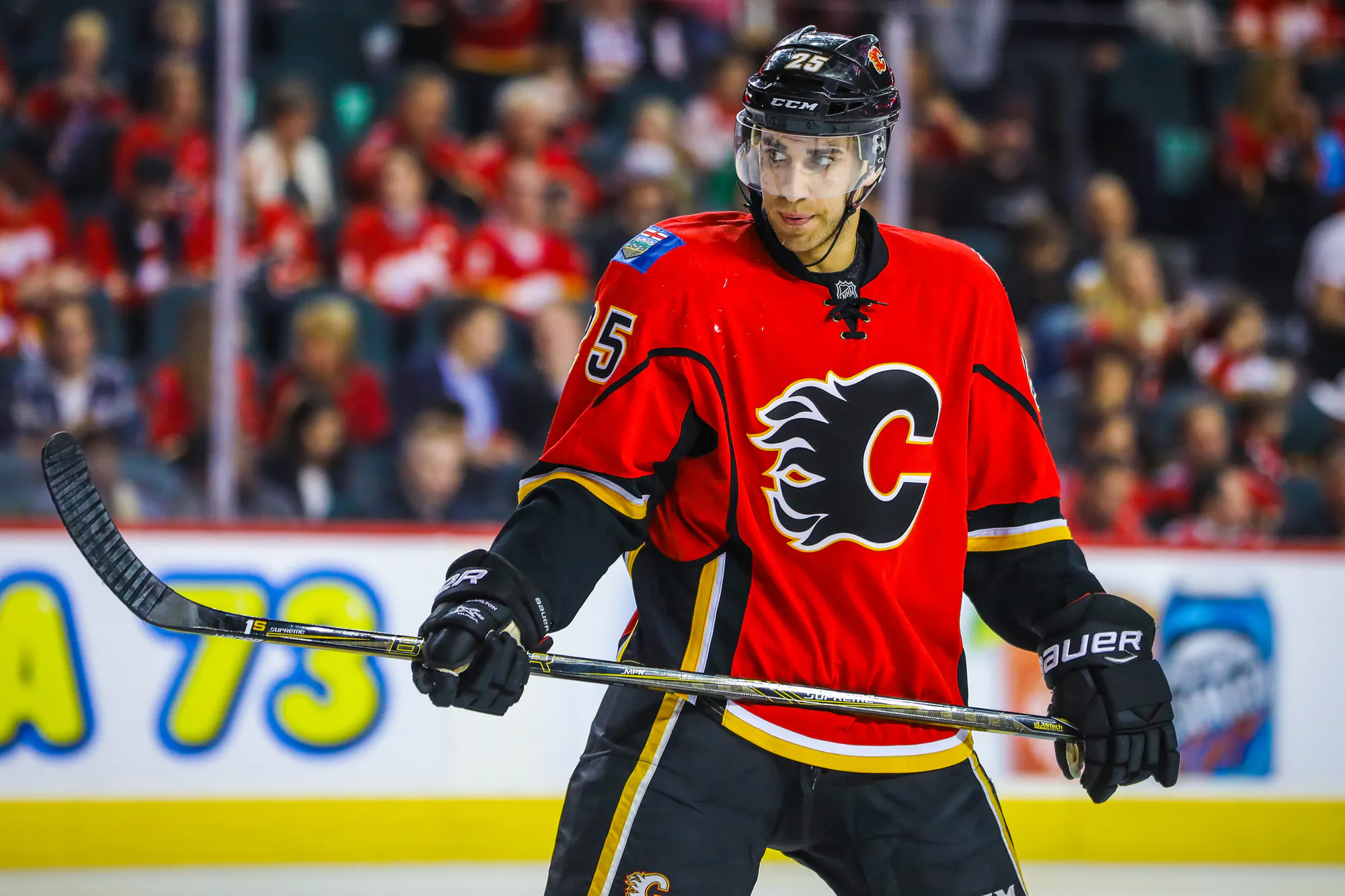What’s in a healthy scratch?

By Ari Yanover
6 years agoIn 2016-17, Freddie Hamilton set a new career high for games played in the NHL: 26. While that may be 26 more than most will ever get, it’s still not a particularly impressive number. For just over a quarter of the season, he averaged 9:47 in ice time and scored two goals for his efforts.
The other 56 games? He sat in the press box, available in case the team needed him – at least until puck drop, at which point his night effectively ended.
He’s still a professional hockey player, but one with an even more irregular schedule. Most of the games he played, he dressed because another player was injured (most notably Johnny Gaudreau); then, the player who took his place as healthy scratch was often an AHL call up (Hunter Shinkaruk and Linden Vey’s names frequently pop up throughout this).
And really, he was the ideal healthy scratch to have.
All players being healthy, none suspended, and the ability to have a consistent lineup intact, who the team’s healthy scratches are isn’t much of a consideration. This is pretty much never the case, though. Somebody is inevitably going to get hurt at some point through the season. A young player will likely need to sit at some point (Hamilton made his 2016-17 season debut when it was determined Matthew Tkachuk should be in the press box early in his NHL career). And even then, emergencies will crop up, be they a suspension (again, Tkachuk), the flu, someone about to become a new father – whatever.
So whenever it was Hamilton was needed, he stepped up to the task, fulfilling the most basic role there is: be a warm body capable of playing. Hamilton was basically the replacement level option the Flames had, a blank slate who could step in whenever need be. He wasn’t there to create offence, and his 47.18% 5v5 CF wasn’t great – for context, regular fourth line centre Matt Stajan clocked in at 49.09% – but he got the job asked of him done, and still outperformed some regulars.
As the Flames look to fill out their lineups for the next season – there appears to be a spot for a prospect left on both forward and defence, as well as extra healthy scratch spots – then it begs the question: do you have another prospect called up, even if he isn’t going to play that often, or do you use that healthy scratch spot in the lineup on the Hamiltons on the roster?
Hamilton outperformed Vey in camp, so Hamilton got to spend the year in the NHL, regardless of how much he actually ended up playing. Did it make sense to have him often dress ahead of Shinkaruk, however, when Shinkaruk was recalled? Or, on the defensive end of things, did Rasmus Andersson’s extended recall – and extended stay in the press box – make the most sense? Sure, Andersson had the chance to practice extensively at the NHL level, which has its own value; on the other hand, would he have been better off getting in games at the AHL?
Now extrapolate that over a full season, and who would you rather have sitting in the press box? Remember that Hamilton was up for an entire year and got in all of 26 games. Brett Kulak, on the other hand, played nearly double the amount of hockey Hamilton did thanks to being sent down to the AHL after repeated stints as a healthy scratch.
Say Mark Jankowski makes the team, but not to the extent of having a regular spot in the lineup. Is it worth keeping him up through the entire season if he isn’t going to get a regular shift? Or should the distinction of frequent healthy scratch remain that of someone like Hamilton – someone who can perform at this level without really contributing much, but whose days as a prospect with untapped potential are likely over? Or should Jankowski rotate with another forward prospect, so both players get both AHL and NHL playing and practice time?
What about someone with a greyer value? Curtis Lazar has thus far spent most of his time as a Flame in the press box, albeit through no real fault of his own. If, however, he’s unable to establish himself the way the team hopes, does he become ideal press box fodder? What if it’s a player like Garnet Hathaway, who may technically still be a prospect depending on one’s definition, but doesn’t have much of a ceiling to speak of?
Does someone like Stajan, who is overpaid relative to his role and on an expiring contract, or someone like Troy Brouwer, assuming he fails to rebound from one of the worst seasons in his career, end up a healthy scratch instead? Does it make sense for a prospect to battle alongside these players throughout the season – and even if the prospect wins the battle, will he be regularly dressed over guys making millions more than him with far more experience, regardless of talent level?
Who would you see as the Flames’ insurance players, often sitting above the ice through much of the year, throughout 2017-18?
Recent articles from Ari Yanover




